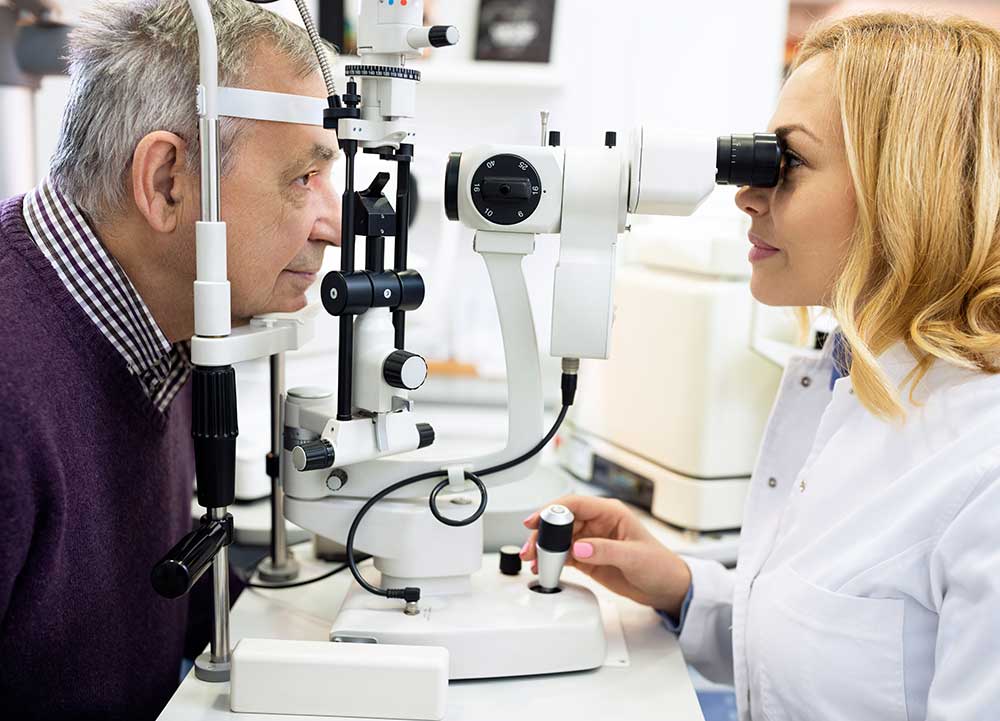Comprehending the Duty of Your Eye Doctor in Maintaining Vision
Comprehending the Duty of Your Eye Doctor in Maintaining Vision
Blog Article
Exploring the current Technological Improvements in Optometry and What They Mean for Eye Doctors
From the accuracy of Optical Coherence Tomography to the nuanced understandings used by AI-driven analysis tools, these technologies are setting new criteria in individual analysis and therapy. As these developments penetrate the technique, eye doctors are encountered with the challenge of embracing these tools to boost client outcomes.
Advancements in Diagnostic Devices
Advancing the field of optometry, technologies in diagnostic tools have revolutionized the means eye care professionals examine and detect visual impairments and ocular conditions. The previous years has observed considerable technological developments, making it possible for even more accurate and comprehensive examinations. Optical Comprehensibility Tomography (OCT), as an example, offers high-resolution cross-sectional photos of the retina, allowing for the very early detection of diseases such as glaucoma and age-related macular degeneration. This non-invasive imaging strategy has become vital in modern optometric technique.
One more trick development is the intro of advanced corneal topography systems, which map the surface area curvature of the cornea with precision. These devices are specifically helpful for suitable get in touch with lenses and identifying corneal problems. Digital retinal imaging has actually transformed conventional ophthalmoscopy, using detailed, scenic sights of the retina that facilitate extensive aesthetic evaluations.
The growth of wavefront aberrometry has actually also been essential, enabling the analysis of refractive errors with unparalleled accuracy (Opticore Optometry). This modern technology aids in tailoring corrective lenses and enhancing surgical outcomes for refractive surgical procedures. Jointly, these diagnostic improvements encourage optometrists to deliver exceptional client treatment, guaranteeing early treatment and tailored treatment strategies, ultimately boosting visual health outcomes
AI in Individual Monitoring
Structure on the structure of cutting-edge diagnostic devices, the consolidation of fabricated intelligence (AI) in person monitoring stands for a transformative jump for optometry. AI systems are progressively utilized to enhance efficiency, precision, and personalization in individual care.
Additionally, AI-driven platforms assist in streamlined client communications and management processes. Automated organizing, digital examinations, and customized follow-up strategies not just boost individual complete satisfaction but additionally optimize time administration for practitioners. These systems can triage clients based upon the urgency of their problems, guaranteeing that those in crucial need receive prompt attention.
Additionally, AI boosts decision-making by offering eye doctors with evidence-based referrals and therapy pathways. By incorporating information from digital health records, AI devices supply insights that educate professional choices, lowering the danger of errors and enhancing person outcomes. As AI continues to progress, its function in person monitoring will likely broaden, improving the landscape of optometric care.
Breakthroughs in Retinal Imaging
In the world of optometry, retinal imaging has actually observed remarkable technical innovations that are improving diagnostic abilities and client care. Technologies such as Optical Comprehensibility Tomography (OCT) and fundus digital photography have changed just how eye doctors analyze the retina and envision.
Boosted imaging techniques like OCT angiography are more refining analysis accuracy. This non-invasive method maps blood flow in the retina, supplying important understandings right into vascular health and wellness without the need for color shots. Additionally, adaptive optics innovation is being integrated right into retinal imaging systems to fix eye aberrations, providing unmatched picture clarity. Such innovations promote the recognition of minute retinal adjustments that can represent illness progression.
Moreover, innovations in expert system are enhancing retinal imaging by allowing automated analysis of large datasets. These systems assist eye doctors in determining patterns indicative of pathology, thus boosting analysis accuracy and efficiency. Collectively, these developments are changing retinal imaging right into a cornerstone of modern eye treatment, improving results and increasing restorative possibilities.
Teleoptometry's Growing Function
Teleoptometry is significantly coming to be a vital part of eye treatment, driven by improvements in electronic click this site communication and analysis devices. This is especially helpful in underserved and country areas where access to specialized eye treatment is often minimal.
The combination of synthetic intelligence (AI) additional enhances teleoptometry, making it possible for the analysis of visual data and assisting in the detection of eye conditions such as glaucoma and diabetic person retinopathy. AI-powered algorithms can rapidly translate complex imaging data, offering optometrists with useful insights that boost scientific decision-making.
In addition, teleoptometry sustains connection of care via seamless combination with electronic health records (EHRs), permitting optometrists to keep comprehensive patient backgrounds. This makes certain that clients receive tailored and consistent treatment also when seeking advice from various experts.
Regardless of these advantages, obstacles continue to be, including making certain data safety and taking care of person expectations. Teleoptometry represents a significant stride towards even more accessible, efficient, and patient-centered eye care. As modern technology advances, its function is poised to broaden additionally.

Future Trends in Eye Treatment
A myriad of innovative fads is readied to improve the future of eye care, driven by technical innovations and the progressing requirements of patients. One significant fad is the combination of artificial intelligence (AI) in diagnostics, which assures to boost the accuracy and effectiveness of eye examinations. AI algorithms can examine vast amounts of information from Extra resources retinal images, potentially discovering problems like diabetic retinopathy and glaucoma earlier than typical techniques.
Additionally, tailored medicine is gaining grip in optometry, with genetic screening informing tailored therapy plans. This technique intends to optimize individual outcomes by customizing interventions to specific genetic profiles. Wearable technology, such as clever contact lenses, is also on the perspective, supplying real-time tracking of intraocular stress or glucose levels, hence providing constant insights right into systemic and ocular health.
The adoption of increased truth (AR) and virtual reality (VIRTUAL REALITY) in training and person education is another emerging trend. These innovations provide immersive experiences that can enhance understanding and abilities both for eye doctors and patients. As these trends progress, optometrists have to stay abreast of technological developments to give sophisticated care, guaranteeing better client end results and complete satisfaction in the dynamic landscape of eye treatment.
Conclusion

Collectively, these analysis innovations equip optometrists to provide exceptional individual care, guaranteeing early intervention and tailored treatment techniques, inevitably improving visual wellness outcomes.

As these modern technologies continue to develop, eye doctors should adjust his explanation and integrate them right into technique, ultimately enhancing process efficiency and elevating the criterion of eye treatment supplied to individuals.
Report this page